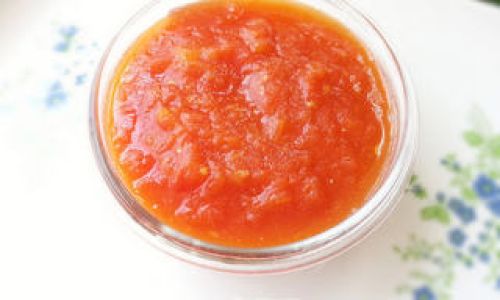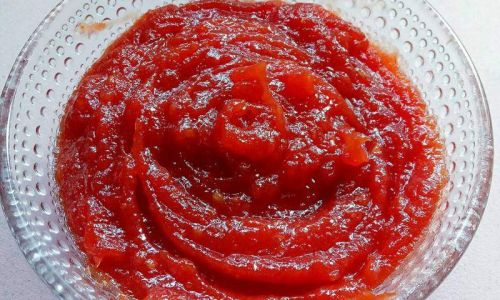Introduction
Homemade tomato sauce is a culinary gem that can elevate any dish from mundane to magnificent. Whether you’re pairing it with pasta, using it as a pizza base, or simply enjoying it with a piece of crusty bread, the rich, tangy flavor of homemade tomato sauce is unparalleled. Unlike store-bought versions, homemade sauce allows you to control the ingredients, ensuring it’s fresh, healthy, and tailored to your taste preferences. In this comprehensive guide, we’ll walk you through every step of making homemade tomato sauce, from selecting the perfect tomatoes to adding the finishing touches. By the end, you’ll be a pro at crafting delicious, homemade tomato sauce that will become a staple in your kitchen.
Chapter 1: Choosing the Right Tomatoes
The foundation of any good tomato sauce is, of course, the tomatoes themselves. The variety, ripeness, and freshness of your tomatoes will significantly impact the final flavor of your sauce. Here are some key factors to consider when selecting tomatoes for your sauce:
1 Varieties of Tomatoes

There are countless varieties of tomatoes, each with its unique flavor profile and texture. For sauce-making, some of the best options include:
- Roma Tomatoes: These are often considered the gold standard for sauce-making. They have a lower water content and a higher flesh-to-seed ratio, making them ideal for creating a thick, rich sauce.
- San Marzano Tomatoes: These Italian heirloom tomatoes are known for their sweet, slightly tangy flavor and are often used in high-quality canned tomato products. If you can find fresh San Marzano tomatoes, they’re an excellent choice.
- Plum Tomatoes: Similar to Roma tomatoes, plum tomatoes are also low in water and high in flavor, making them great for sauce.
2 Ripeness
Fully ripe tomatoes are essential for making the best sauce. Look for tomatoes that are deeply colored, firm but not hard, and free of bruises or soft spots. Overripe tomatoes can be too mushy and underripe ones will lack flavor.
3 Freshness
Using fresh tomatoes whenever possible will yield the best results. However, if fresh tomatoes aren’t in season or aren’t available, good-quality canned tomatoes can be a suitable substitute. Look for cans with no added preservatives or seasonings, as you’ll want to control those aspects of the sauce yourself.
Chapter 2: Preparing the Tomatoes
Once you’ve selected your tomatoes, it’s time to prepare them for the sauce-making process. This involves washing, peeling (if desired), seeding, and chopping the tomatoes.
1 Washing the Tomatoes
Thoroughly wash your tomatoes under running water to remove any dirt or pesticides. Pat them dry with a clean towel.
2 Peeling the Tomatoes (Optional)
Peeling the tomatoes is a traditional step that can give your sauce a smoother texture and a more refined appearance. However, it’s entirely optional. If you decide to peel them, here’s how:

- Make an ‘X’ on the bottom of each tomato using a sharp knife.
- Blanch the tomatoes in boiling water for about 30 seconds to 1 minute. This will loosen the skin.
- Immediately transfer the tomatoes to an ice water bath. The skin should now come off easily.
3 Seeding and Chopping
Cut the tomatoes in half and gently squeeze out the seeds and excess juice. You can use a spoon to help remove the seeds more efficiently. Chop the tomatoes into small pieces or, for a smoother sauce, puree them using a blender or food processor.
Chapter 3: Gathering Your Ingredients
In addition to tomatoes, there are several other ingredients you’ll need to make a flavorful, well-rounded tomato sauce. Here’s a list of essentials:
- Onions: For sweetness and depth of flavor.
- Garlic: For a savory, aromatic punch.
- Olive Oil: For sautéing the vegetables and adding richness.
- Fresh Basil or Oregano: For a fresh, herbal flavor.
- Salt and Pepper: To taste.
- Sugar or Honey (Optional): To balance out any acidity in the tomatoes.
- Balsamic Vinegar or Red Wine (Optional): For added complexity and depth.
- Tomato Paste (Optional): To thicken the sauce and intensify the tomato flavor.
Chapter 4: Cooking the Sauce
Now it’s time to put all your ingredients together and cook the sauce. This process involves sautéing the aromatics, adding the tomatoes, simmering, and seasoning to perfection.
1 Sautéing the Aromatics
In a large, heavy-bottomed pot or Dutch oven, heat a few tablespoons of olive oil over medium heat. Add finely chopped onions and sauté until they’re translucent and starting to brown, about 5-7 minutes. Add minced garlic and cook for another 1-2 minutes, until fragrant but not burnt.
2 Adding the Tomatoes
Add the prepared tomatoes to the pot, along with any juices that accumulated while chopping. If you’re using canned tomatoes, crush them by hand or with a potato masher before adding. Stir to combine.
3 Simmering

Bring the mixture to a simmer, then reduce the heat to low. Let the sauce simmer gently, uncovered, for at least 30 minutes to an hour. Stir occasionally to prevent sticking and to break down the tomatoes further. The longer you simmer the sauce, the thicker and more concentrated it will become.
4 Seasoning
After the sauce has simmered for a while, it’s time to season it. Start with a pinch of salt and freshly ground black pepper. Taste and adjust as needed. If the sauce is too acidic, you can add a small amount of sugar or honey to balance it out. For added complexity, stir in a splash of balsamic vinegar or a bit of red wine. If you want a thicker sauce, stir in some tomato paste.
Chapter 5: Finishing Touches
The final touches can make a big difference in the overall flavor and texture of your sauce. Here are some optional steps to consider:
1 Blending for Smoothness
For a smooth, velvety sauce, use an immersion blender to puree the sauce directly in the pot. Alternatively, transfer the sauce to a blender (in batches if necessary) and blend until smooth. Be cautious when blending hot liquids, as the steam can cause the lid to pop off.
2 Adding Fresh Herbs
Stir in some freshly chopped basil or oregano at the end of cooking. The heat from the sauce will wilt the herbs, releasing their flavor without overcooking them.
3 Finishing with Olive Oil
Drizzle a little extra olive oil over the sauce before serving. This will add a rich, glossy finish and enhance the overall flavor.

Chapter 6: Storing and Using Your Sauce
Once your sauce is perfectly seasoned and to your liking, it’s ready to be enjoyed. Here’s how to store it and incorporate it into your meals.
1 Cooling and Storing
Let the sauce cool to room temperature, then transfer it to airtight containers. You can store it in the refrigerator for up to a week. For longer storage, freeze the sauce in portions in freezer-safe containers or bags.
2 Incorporating into Meals
The versatility of homemade tomato sauce makes it a great addition to countless dishes. Here are just a few ideas:
- Pasta: Toss hot pasta with your sauce and a sprinkle of Parmesan cheese.
- Pizza: Use it as a base for your pizza sauce, then add your favorite toppings.
- Soups and Stews: Add a ladle of sauce to vegetable, bean, or chicken soups and stews for added flavor and richness.
- Meatballs and Meats: Serve with meatballs, grilled meats, or use it as a braising liquid for slow-cooked dishes.
- Bread Dipping Sauce: Serve it warm with crusty bread for a simple yet satisfying appetizer.
Conclusion
Making homemade tomato sauce may seem like a time-consuming endeavor, but the rewards are well worth it. With fresh, high-quality ingredients and a bit of patience, you can create a sauce that’s bursting with flavor, texture, and personality. Whether you’re a seasoned chef or a home cook just starting out, this guide should provide you with the knowledge and confidence to make delicious, homemade tomato sauce that will become a cherished part of your culinary repertoire. So, gather your ingredients, roll up your sleeves, and start crafting your very own batch of homemade tomato sauce today. Buon appetito!





0 comments